Birds are a major part of the Rift Valley, one of the world’s most important migration corridors. The region is home to a wide variety of species, including raptors, waterfowl, songbirds, and non-migratory species.
In spring and autumn, the Rift Valley plays host to millions of migrating birds, making it a paradise for birdwatchers. The variety of species that can be seen and heard here is truly astounding.
Whether it’s watching the majestic flight of the raptors, admiring the vibrant colors of the songbirds, or simply listening to the chorus of birdsong, the Rift Valley is an ideal place to observe the beauty of birds.
1. Lesser Flamingo
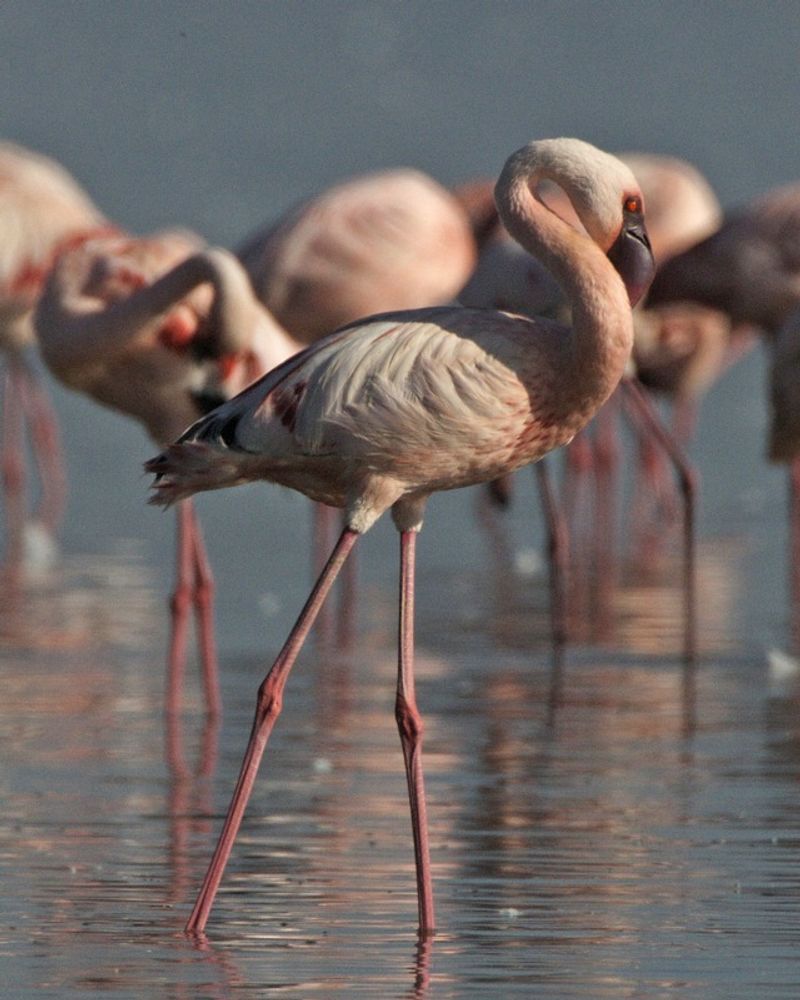
The lesser flamingo is a species of flamingo found in sub-Saharan Africa and western India. It is a relatively widespread species and is often seen in large flocks in its native range. However, there have been occasional sightings further north, outside of its normal range.
These sightings are generally considered to be of vagrants or birds that have strayed from their normal range and are not part of a resident population.
It is unclear why these birds have ventured out of their native range, but it could be due to shortages of food or other environmental factors.
Despite these occasional sightings, the lesser flamingo is generally considered to be a species of the warmer climates found in sub-Saharan Africa and western India.
| Kingdom | Animalia |
| Phylum | Chordata |
| Class | Aves |
| Order | Phoenicopteriformes |
| Family | Phoenicopteridae |
| Genus | Phoeniconaias |
| Species | P. minor |
2. Steppe Eagle
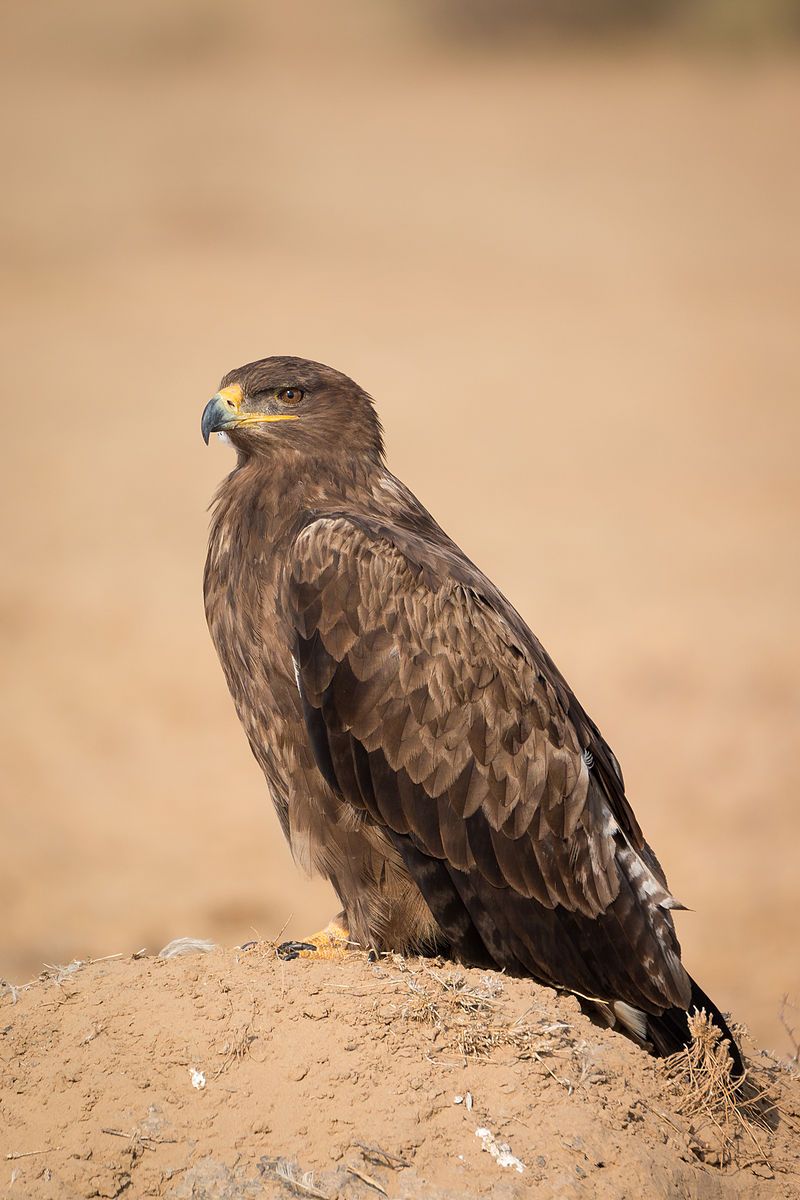
The steppe eagle is a large bird of prey belonging to the family Accipitridae. This family includes birds such as hawks, kites, and eagles.
As a member of the subfamily Aquilinae, also known as the “booted eagles,” the steppe eagle is easily distinguished from other birds of prey by its well-feathered legs. This is a trait shared by all of the birds in the Aquilinae subfamily.
The steppe eagle is a powerful predator that hunts small mammals, reptiles, and other birds. It typically feeds on the ground but is also capable of soaring to great heights in search of prey. It is found in open habitats such as steppes, grasslands, and savannas.
Its range stretches from Europe to Asia, and it is a common sight in many parts of the world. The steppe eagle plays an important role in its ecosystem. It helps to keep populations of small animals in check, ensuring that they don’t become overabundant.
It also helps to keep other bird species in balance, as it preys on a variety of birds. This helps to maintain healthy bird populations and keep the food web in balance.
In recent years, the steppe eagle has faced a number of threats, such as habitat destruction and the use of pesticides. Conservation efforts have been put in place to protect the species and ensure its long-term survival.
By protecting its habitat and limiting the use of pesticides, we can ensure that the steppe eagle continues to thrive and remain a common sight in the world’s open habitats.
| Kingdom | Animalia |
| Phylum | Chordata |
| Class | Aves |
| Order | Accipitriformes |
| Family | Accipitridae |
| Genus | Aquila |
| Species | A. nipalensis |
3. Standard-winged Nightjar
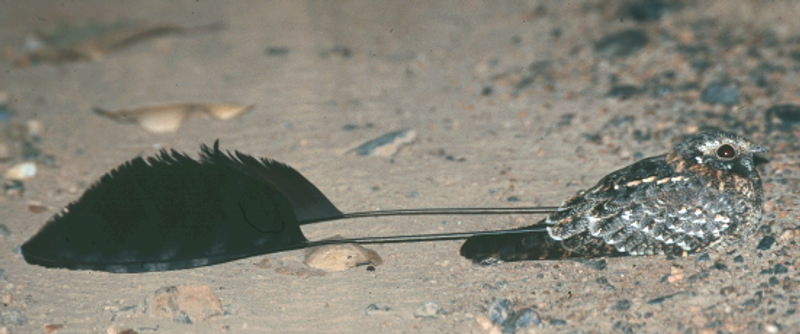
The standard-winged nightjar is a species of bird in the nightjar family. This bird is mainly found in the tropical regions of Asia and Africa, although it is also found in southern Europe and the Middle East.
It is a nocturnal bird, which means it is most active during the night, and it is rarely seen during the day. It usually has a mottled gray or brown coloration with some white or grayish markings, and its wings are usually a darker color than its body.
The standard-winged nightjar is also quite small, usually measuring less than ten inches in length. The standard-winged nightjar is an insectivore, meaning it feeds mainly on insects. It hunts by flying low over the ground, using its excellent eyesight to spot its prey.
It often hunts in open areas, such as grasslands or meadows, but it can also be found in wooded areas. It can be heard at night, due to its distinctive call that sounds like a churring or whirring noise.
The standard-winged nightjar nests on the ground, usually in grassy areas or near bushes. It lays its eggs in a shallow depression that is lined with feathers and plant material. The female typically lays two to three eggs, which are incubated by both parents.
After hatching, the young birds are able to fly within a few weeks. The standard-winged nightjar is an important species in its range, as it helps to control insect populations. It is also a popular species among birdwatchers, due to its unique coloration and nocturnal behavior.
Unfortunately, its population is declining due to habitat loss and destruction, so it is important to protect this species and its habitat.
| Kingdom | Animalia |
| Phylum | Chordata |
| Class | Aves |
| Clade | Strisores |
| Order | Caprimulgiformes |
| Family | Caprimulgidae |
| Genus | Caprimulgus |
| Species | C. longipennis |
4. Yellow-necked Spurfowl
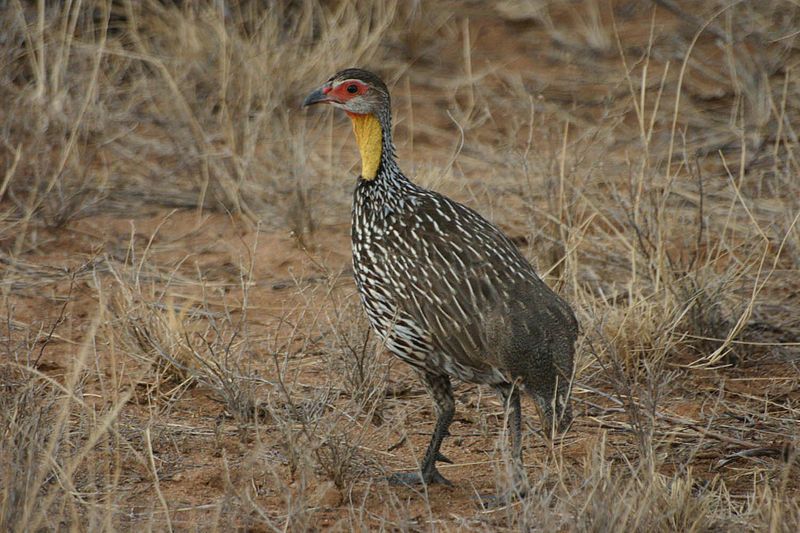
The yellow-necked spurfowl, also known as the yellow-necked francolin, is a type of bird that belongs to the Phasianidae family. It is a widespread species, found in regions such as Djibouti, Eritrea, Ethiopia, Kenya, Somalia, Sudan, Tanzania, and Uganda.
The species was named after the distinctive yellow patch that can be found on its neck. This patch is used to help the bird stand out from other species and is a key feature of their identifying characteristics.
The yellow-necked spurfowl has a variety of behaviors and habitats, which vary depending on the region. It is generally found in grasslands and open woodlands, as well as in areas with dense vegetation.
It feeds on insects, small mammals, and other small animals, and will sometimes also feed on fruit and seeds. The yellow-necked spurfowl is a social species, often living in flocks of three to five birds.
They are also known to be quite vocal, making a variety of noises such as cackles, coos, and caws. The yellow-necked spurfowl is an important species in many African ecosystems and is an iconic species of the continent.
| Kingdom | Animalia |
| Phylum | Chordata |
| Class | Aves |
| Order | Galliformes |
| Family | Phasianidae |
| Genus | Pternistis |
| Species | P. leucoscepus |
5. Egyptian Vulture
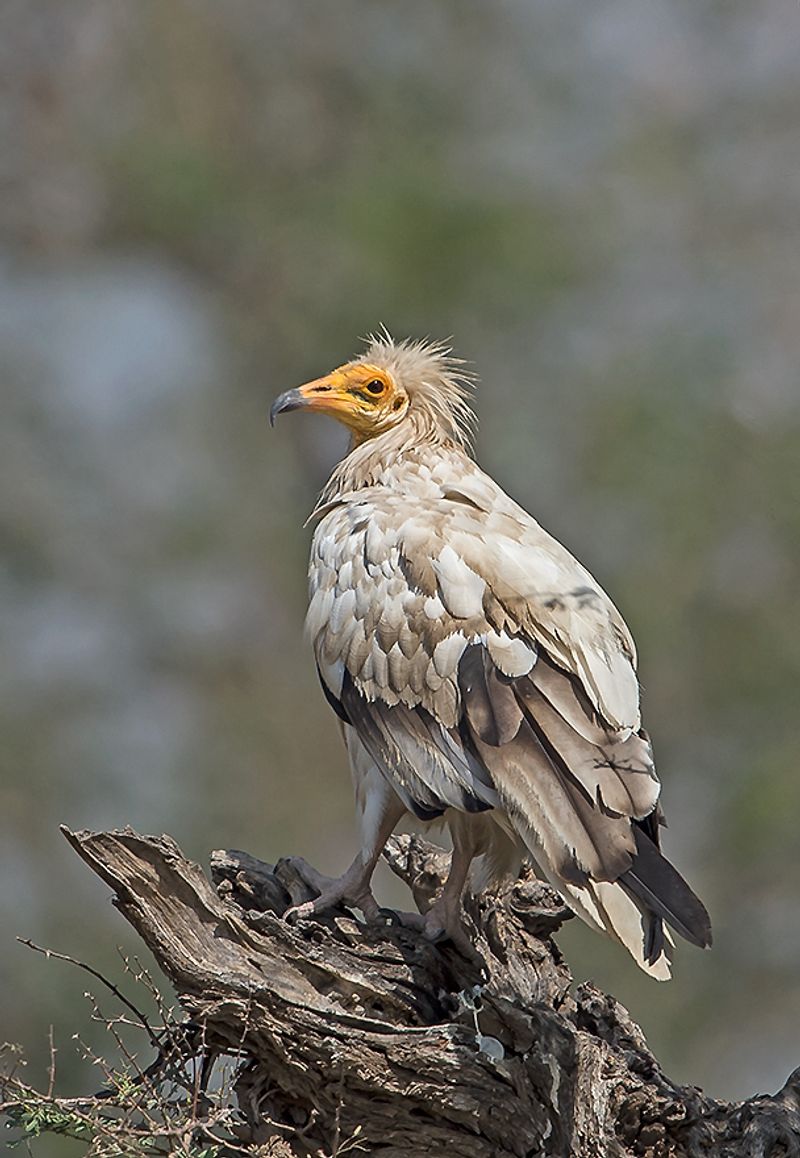
The Egyptian vulture is a species of Old World vulture, belonging to the genus Neophron. It is also known as the white scavenger vulture or pharaoh’s chicken and is a relatively small bird.
This species of vulture is found across a wide range of habitats, ranging from the Iberian Peninsula in Europe to North Africa and India in the east.
They are known to feed on carrion and other small animals, and the combination of their white plumage and scavenging behavior has earned it the nickname “pharaoh’s chicken”.
They are known to nest in cliffs and canyons and have been observed using tools to break open eggs, demonstrating their level of intelligence. The Egyptian vulture is considered to be a vulnerable species, with populations decreasing due to habitat loss and persecution.
Conservation efforts are underway to ensure the survival of this species.
| Kingdom | Animalia |
| Phylum | Chordata |
| Class | Aves |
| Order | Accipitriformes |
| Family | Accipitridae |
| Genus | Neophron |
| Species | N. percnopterus |
6. Somali Ostrich
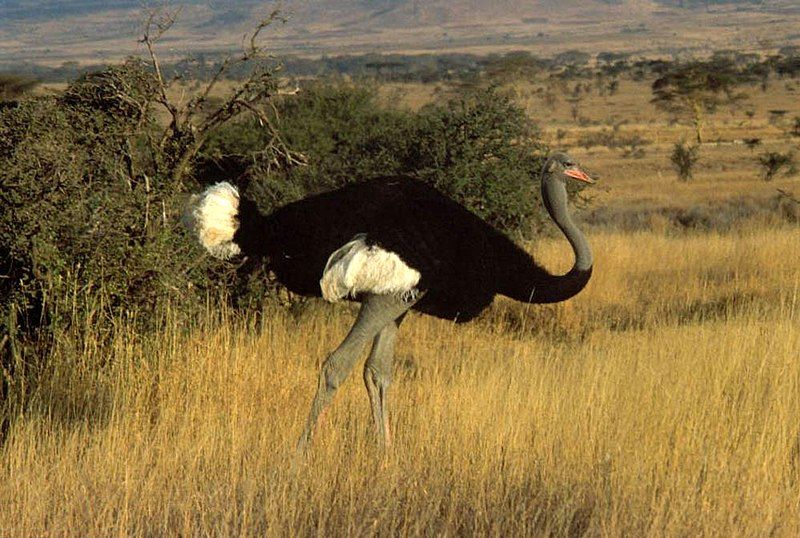
The Somali ostrich is a large, flightless bird native to the Horn of Africa. It is one of two living species of ostriches, the other being the common ostrich. It is often referred to as the blue-necked ostrich, due to its distinctive blue-ish neck feathers.
Until 2014, the Somali ostrich was considered a subspecies of the common ostrich. However, in 2014, it was officially identified as a distinct species. The Somali ostrich is much smaller than the common ostrich and is typically a lighter color.
They are also more agile than their larger cousin and have longer legs. The Somali ostrich has a wide range of habitats, including woodlands, grasslands, and savannahs, and is usually found around water.
Despite their size, they are surprisingly fast runners and are able to reach speeds of up to 45 miles per hour. They are also excellent swimmers. The Somali ostrich is an important part of the African ecosystem, helping to control insect populations and disperse plant seeds.
Unfortunately, their population is declining due to poaching and habitat destruction. It is estimated that there are fewer than 10,000 Somali ostriches left in the wild.
| Kingdom | Animalia |
| Phylum | Chordata |
| Class | Aves |
| Order | Struthioniformes |
| Family | Struthionidae |
| Genus | Struthio |
| Species | S. molybdophanes |
7. Orange River Francolin
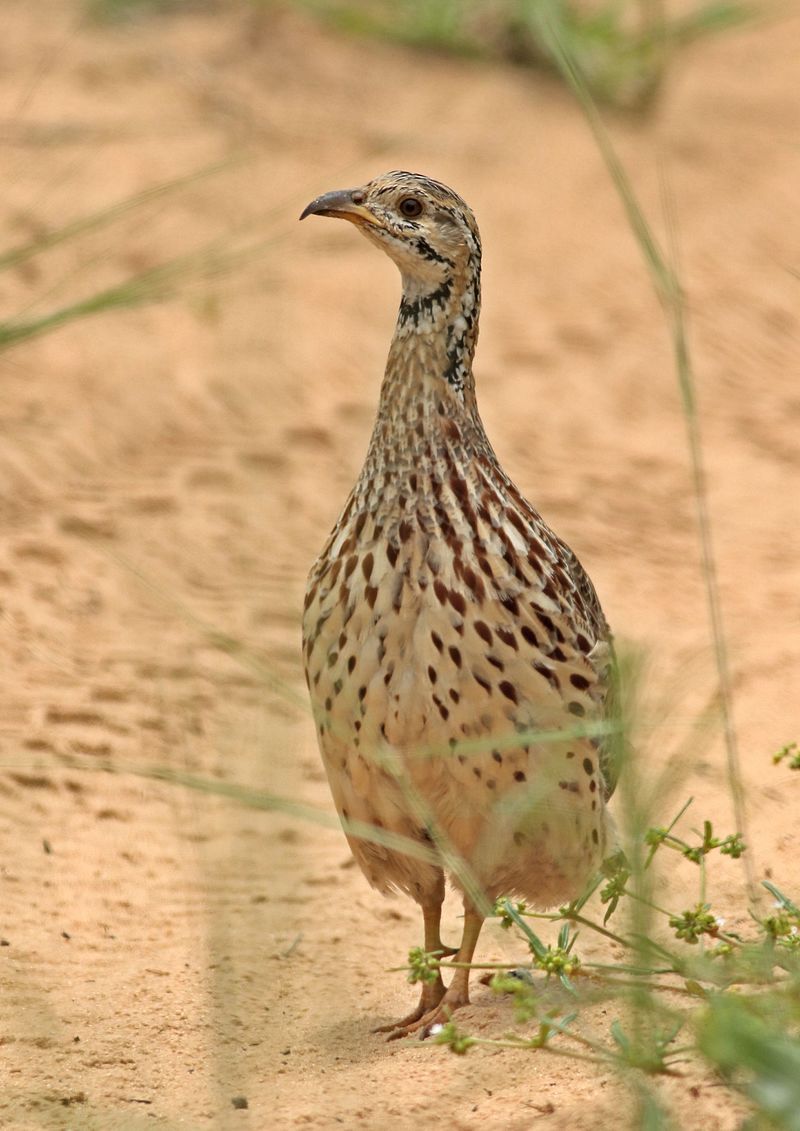
The Orange River francolin is a species of bird that belongs to the family Phasianidae and is found in Africa, primarily in grassland and woodland habitats. This species displays morphological differences between the northern and southern parts of its distribution.
In the northern parts, the neckline of the bird does not extend to the eye, and the belly is whitish in color. In contrast, the southern taxa have a neckline that extends to the eye, and their belly is buff in color.
These morphological differences could be the result of adaptation to different environmental conditions in the two regions or could be due to genetic differences between the two populations.
| Kingdom | Animalia |
| Phylum | Chordata |
| Class | Aves |
| Order | Galliformes |
| Family | Phasianidae |
| Genus | Scleroptila |
| Species | S. gutturalis |
8. Swifts
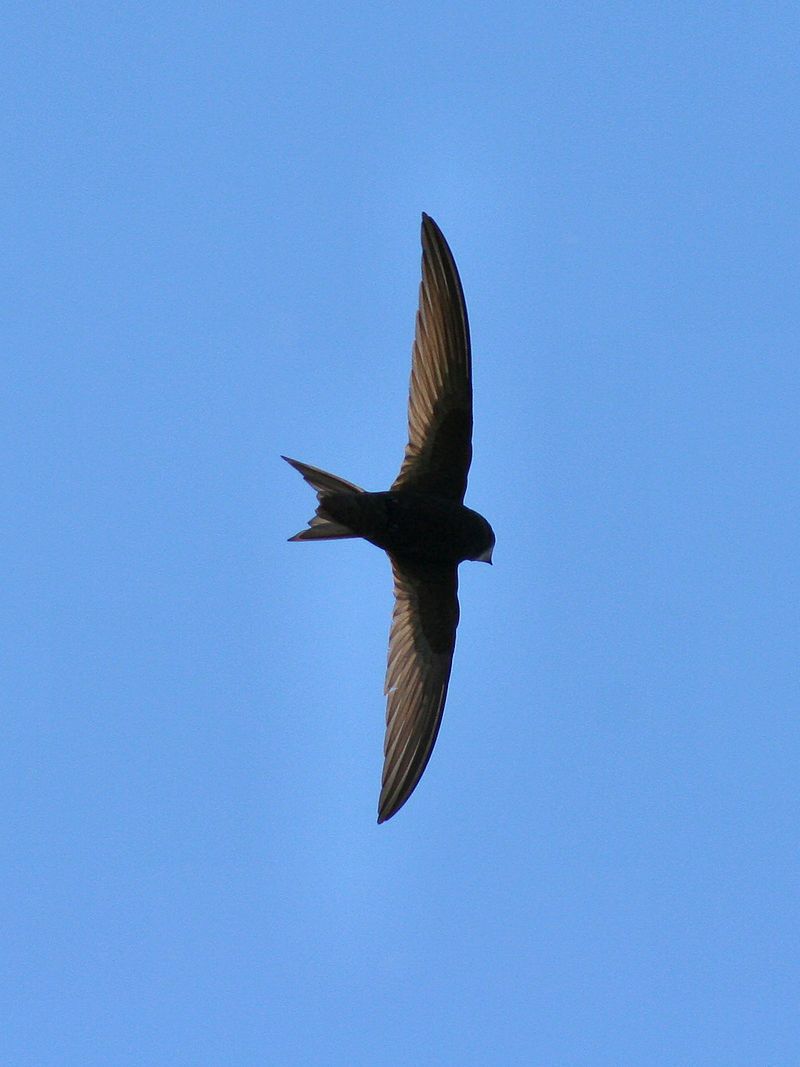
The swifts are a family of birds known as Apodidae. These birds are highly adapted for aerial activities, which makes them very different from other species of birds.
They share certain features with swallows, such as their small size and streamlined shape, but they are not closely related to any passerine species. Swifts are placed in the order Apodiformes, which also includes hummingbirds.
This order is defined by the birds’ ability to fly quickly and agilely. Swifts and hummingbirds have adapted differently to their aerial lifestyle, but they both exhibit incredible skill when flying.
Swifts can reach speeds of up to 106 mph and can remain in flight for extended periods of time, while hummingbirds can hover and fly backward with ease. Both of these birds have evolved special adaptations that make them perfectly suited for their aerial lifestyle.
| Kingdom | Animalia |
| Phylum | Chordata |
| Class | Aves |
| Clade | Strisores |
| Order | Apodiformes |
| Family | Apodidae |
9. Columbidae
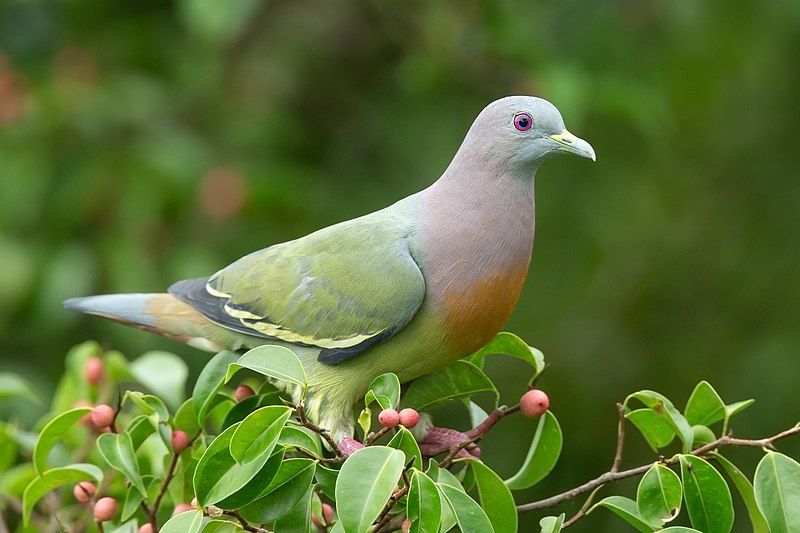
Columbidae is a bird family consisting of doves and pigeons, and it is the only family in the order Columbiformes. These birds have stout bodies with short necks, and their beaks are short and slender. In some species, their beaks have fleshy ceres.
Columbidae birds primarily eat seeds, fruits, and plants. Doves and pigeons are a very diverse group of birds, with over 300 species spread out over the world.
They are found in a variety of habitats, ranging from tropical rainforests to woodlands, deserts, wetlands, and even urban environments.
The majority of dove and pigeon species are ground-dwellers, but some species are arboreal as well. Columbidae birds show a wide range of body sizes, from the smallest species, the New World quail-doves, which only grow to about 10 centimeters in length, to the largest species, the crowned pigeons, which can grow to over 1 meter in length.
They also have a wide range of colors and patterns, and some species have striking, iridescent feathers. Most Columbidae birds feed on a variety of seeds, fruits, and plants. They also eat insects and other invertebrates such as worms and snails.
Some species, such as the domestic pigeon, can also be fed with grains and other human-provided food. Overall, Columbidae birds are an incredibly diverse family of birds, with a wide range of habitats and diets.
They are an important part of many ecosystems, and they provide important ecosystem services such as seed dispersal, pollination, and pest control.
| Kingdom | Animalia |
| Phylum | Chordata |
| Class | Aves |
| Clade | Columbimorphae |
| Order | Columbiformes |
| Family | Columbidae |
10. Common Ostrich
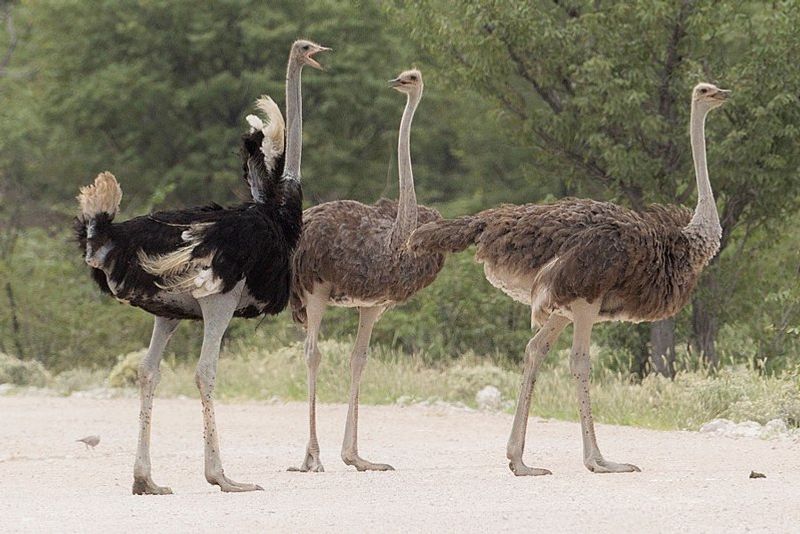
The common ostrich is a species of flightless bird native to certain large areas of Africa. They are the largest living bird, growing up to 9 feet tall and weighing over 300 pounds. They have long legs and a long neck, with a small head and a beak.
They have two toes on each foot, and their feathers are soft and fluffy. They also have large eyes and a keen sense of hearing and smell. Ostriches are the only living members of the genus Struthio in the ratite order of birds.
Ratites are an order of birds that are characterized by their lack of a keel bone in their breastbone. This means that they are unable to fly, unlike other birds.
Ostriches have adapted to their environment by developing strong legs, allowing them to run fast and escape predators. Ostriches live in large groups and feed mainly on plants, but they also eat insects and small animals.
They are able to go long periods of time without drinking water, as they get most of their hydration from the food they eat. They can also survive in very hot climates, as their feathers help to keep them cool.
Ostriches are important to the African ecosystem, as they help to spread seeds and disperse nutrients. They also provide food for other animals, such as lions and hyenas.
As their natural habitats are shrinking due to human activity, it is important to protect these birds and their habitats in order to ensure their survival.
| Kingdom | Animalia |
| Phylum | Chordata |
| Class | Aves |
| Order | Struthioniformes |
| Family | Struthionidae |
| Genus | Struthio |
| Species | S. camelus |
11. Egyptian Goose
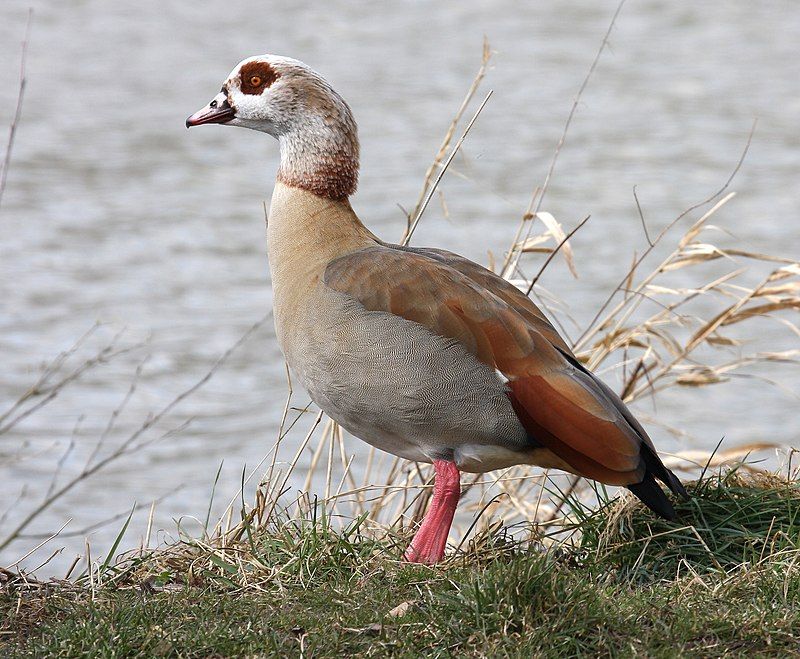
The Egyptian goose is a species of bird that belongs to the duck family Anatidae, native to Africa. It is a popular ornamental bird and has thus been introduced to other parts of the world such as Europe, the United States, and other places beyond its natural range.
This has been done to make it easier for people to appreciate its beauty and charm. These geese are generally quite large in size, having a wingspan of up to two feet. They are brown and white in color, with a distinctive pink patch on their chests.
They have long legs and a long, curved beak. They are usually found in shallow wetlands and marshes, where they can feed on aquatic plants and small invertebrates. Egyptian geese are usually quite social birds, forming strong bonds with one another and living in groups.
They are also quite vocal, making a variety of honks and clucks. They are known to mate for life and are very protective of their young. In addition to their attractive appearance, these geese are also valued for their meat and eggs.
The eggs are considered a delicacy in some cultures, and the meat is said to be comparable to that of other duck species. Overall, the Egyptian goose is an interesting and beautiful bird that has been embraced by people all around the world.
Its introduction to other parts of the world has allowed it to be appreciated and enjoyed by many, and its meat and eggs are also valued in some cultures.
| Kingdom | Animalia |
| Phylum | Chordata |
| Class | Aves |
| Order | Anseriformes |
| Family | Anatidae |
| Genus | Alopochen |
| Species | A. aegyptiaca |
12. Laughing Dove
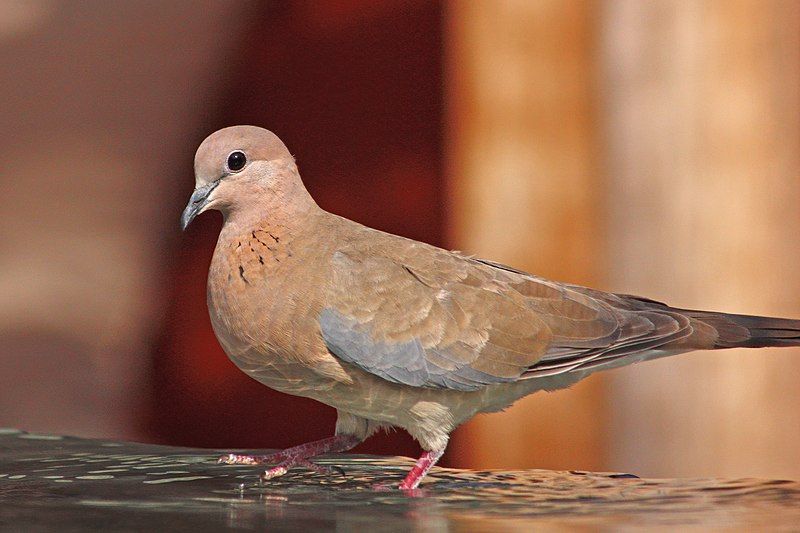
The Laughing Dove is a species of small pigeon native to Africa, the Middle East, South Asia, and Western Australia. It is a resident breeder, meaning it maintains a permanent population in these regions.
In Western Australia, the Laughing Dove established itself in the wild after being released by Perth Zoo in 1898. This species of dove is known for its distinctive laughter-like call, which is made up of a series of short, low-pitched coos.
The Laughing Dove is also renowned for its beautiful plumage, which is predominantly grey-brown in color, with a pale pinkish hue on the wings and neck. They have a long, graduated tail and a black eye line, both of which are prominent features of this species.
The Laughing Dove is a sociable bird, often found in pairs or small flocks, and can often be seen foraging on the ground for food. These birds feed mainly on seeds, but can also take insects and other small invertebrates.
| Kingdom | Animalia |
| Phylum | Chordata |
| Class | Aves |
| Order | Columbiformes |
| Family | Columbidae |
| Genus | Spilopelia |
| Species | S. senegalensis |
13. Ring-necked Dove
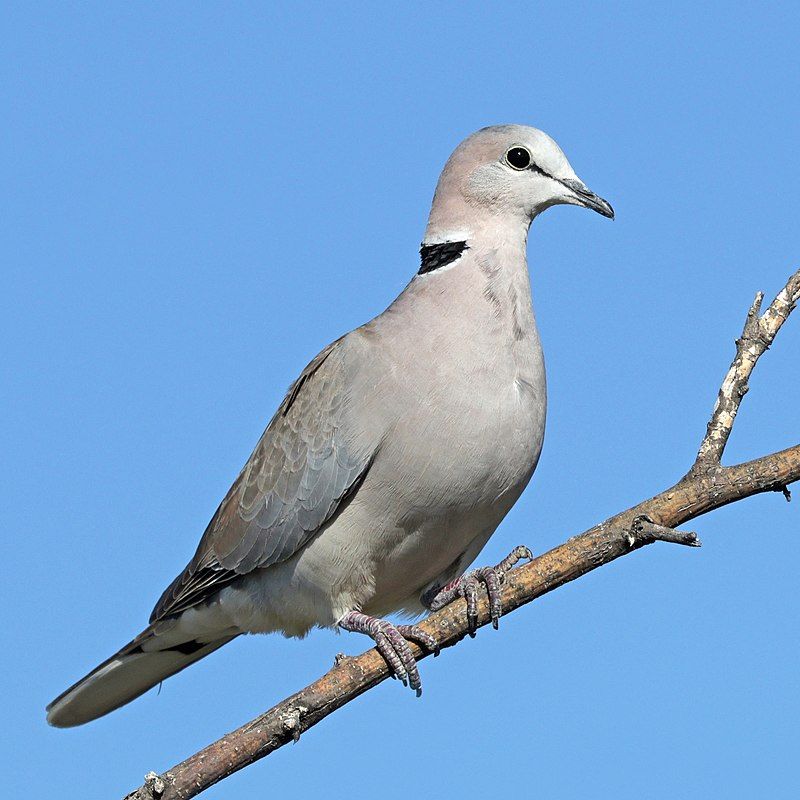
The ring-necked dove is a species of dove that is native to East and Southern Africa. It is also known by two other names – the Cape turtle dove and the half-collared dove. This species is quite widespread and is often seen in large numbers in its native region.
The ring-necked dove is mostly sedentary, meaning that it does not migrate long distances. It is found in a variety of open habitats such as savannas, grasslands, and open woodlands.
This species feeds mainly on seeds and other plant material, although it sometimes feeds on small invertebrates. The ring-necked dove nests in trees and will build its nest from twigs and other plant material.
The ring-necked dove is a fairly large dove, with males reaching up to 28 cm in length and weighing around 130 grams. It has a distinctive brownish-grey plumage with a pale grey breast and neck and a black collar around its neck.
The tail of this species is a grey-brown color, and the wings are tipped in white. The ring-necked dove is a social species and can often be seen in flocks of up to several hundred individuals. It has a loud and distinctive call that is often heard in its native range.
This species is a popular game bird in some parts of its range and is also kept in captivity by some bird enthusiasts.
| Kingdom | Animalia |
| Phylum | Chordata |
| Class | Aves |
| Order | Columbiformes |
| Family | Columbidae |
| Genus | Streptopelia |
| Species | S. capicola |
14. Speckled Pigeon
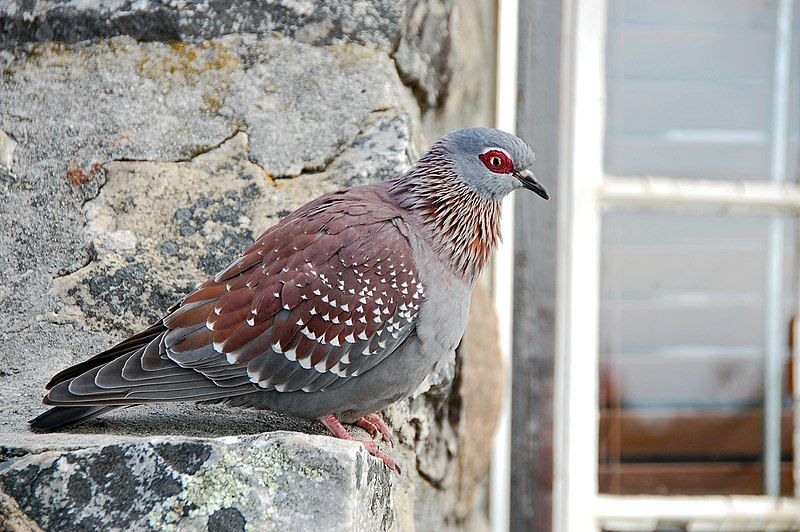
The speckled pigeon, also known as the African rock pigeon or Guinea pigeon, is a species of pigeon found in much of Africa south of the Sahara. This species is a common and widespread bird in open habitats and can be found across a large geographical area.
However, there are certain areas where the speckled pigeon does not live, and these areas are known as “gaps” in its distribution. These gaps in its range may be due to a lack of suitable habitat, or other factors preventing the bird from living in the area.
The speckled pigeon is a resident breeding bird, meaning that it will stay in the same area and reproduce there instead of migrating.
This species is an important part of the African ecosystem, providing food for a variety of other animals, as well as helping to disperse seeds and other organic material.
| Kingdom | Animalia |
| Phylum | Chordata |
| Class | Aves |
| Order | Columbiformes |
| Family | Columbidae |
| Genus | Columba |
| Species | C. guinea |
15. Dwarf Honeyguide
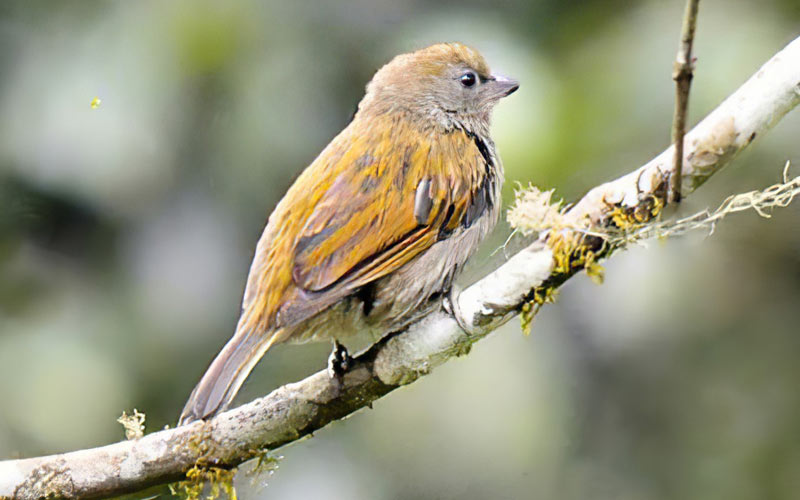
Source: ebird.org
The dwarf honeyguide is a species of bird that belongs to the family Indicatoridae. It is native to the Albertine Rift mountain forests, where it is currently facing a significant threat of habitat loss.
This species is particularly notable for its brood parasitism, meaning that it will lay its eggs in the nest of other birds, who will then raise the chicks as their own. This behavior is shared with other honeyguide species, making them unique among birds.
Unfortunately, the loss of its natural habitat has put the future of the dwarf honeyguide in peril, making it more important than ever to protect and conserve the Albertine Rift mountain forests.
| Kingdom | Animalia |
| Phylum | Chordata |
| Class | Aves |
| Order | Piciformes |
| Family | Indicatoridae |
| Genus | Indicator |
| Species | I. pumilio |
16. Blue-headed Sunbird
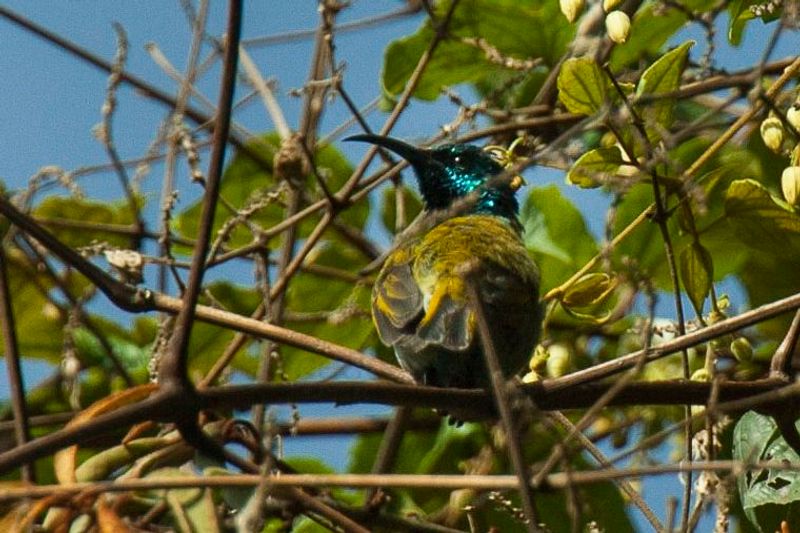
The blue-headed sunbird is a species of bird belonging to the Nectariniidae family. This species is mainly found in the African countries of Burundi, the Democratic Republic of the Congo, Rwanda, and Uganda.
It is a small bird, measuring between 12-14 centimeters in length, and has a bright blue head which, combined with its yellow breast, makes it a very distinctive and attractive bird.
It is also known to have a long, decurved bill which is used to feed on its primary food source; nectar from flowers. Its diet also consists of insects, fruit, and seeds. The blue-headed sunbird is an active and social bird, often found in groups of up to twenty individuals.
They are known to be very vocal, producing a variety of squeaking and whistling calls.
They also have an elaborate courtship display which involves the male fluttering around the female while singing and performing an aerial display. The blue-headed sunbird is an important pollinator of flowering plants in its range and can be found in a variety of habitats ranging from woodlands to grasslands and montane forests.
The species is not considered to be threatened, however, it is still important to be aware of the threats they may face as their population is decreasing due to habitat loss and degradation.
| Kingdom | Animalia |
| Phylum | Chordata |
| Class | Aves |
| Order | Passeriformes |
| Family | Nectariniidae |
| Genus | Cyanomitra |
| Species | C. alinae |
17. Dusky Crimsonwing
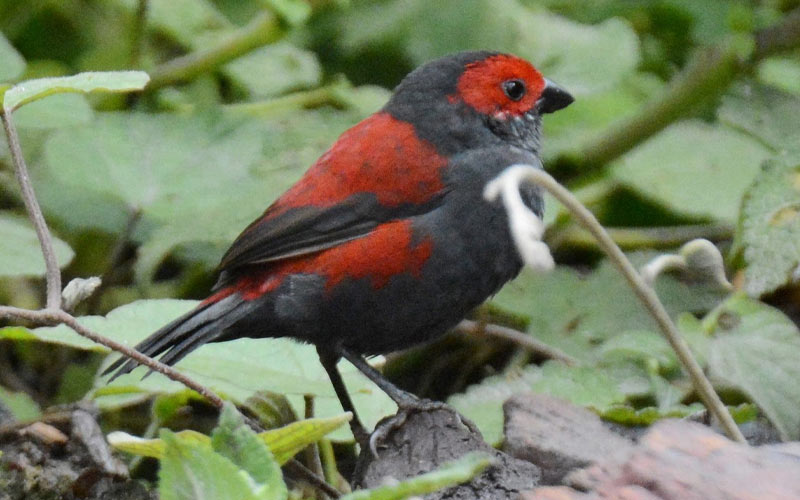
Source: ebird.org
The dusky Crimsonwing is a species of estrildid finch that is native to Africa, with an estimated global range of 78,000 km². It is mainly found in the Albertine Rift montane forests, which is a mountainous area of East-Central Africa.
The species is named after the English explorer Frederick John Jackson, who was the first to make scientific observations of the bird. He noted the distinct plumage and song of the species, which earned it the name ‘dusky crimsonwing’.
The species is generally found in small flocks and feeds on seeds, fruits, and insects. They are monogamous and will build a nest in a tree or bush. They lay two to four eggs per clutch, and the female will incubate the eggs for approximately two weeks.
The dusky Crimsonwing is a fairly common species and is not currently listed as endangered.
| Kingdom | Animalia |
| Phylum | Chordata |
| Class | Aves |
| Order | Passeriformes |
| Family | Estrildidae |
| Genus | Cryptospiza |
| Species | C. jacksoni |
18. Purple-breasted Sunbird
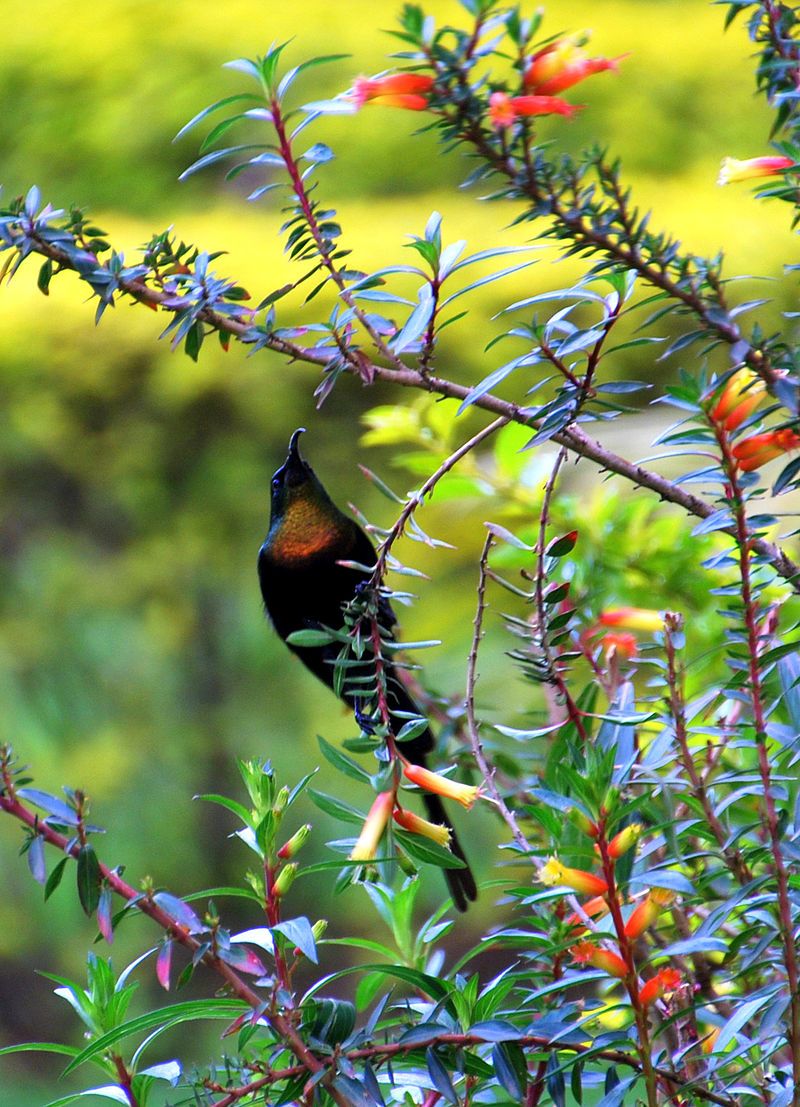
The purple-breasted sunbird is a species of bird that belongs to the family of birds known as Nectariniidae.
This species of bird is a brightly colored bird that is found in four countries in Central Africa, including Burundi, the Democratic Republic of the Congo, Rwanda, and Uganda.
The bird has a distinct bright purple breast and a black head and a white throat, making it a very attractive species of bird. The purple-breasted sunbird is a highly specialized species of bird that feeds on the nectar of flowers.
They have long bills which they use to reach the nectar from deep within the flowers. They can also be found in the canopy of forests, where they feed on the nectar of trees. They also eat insects and other small invertebrates.
The purple-breasted sunbird is an important pollinator for many of the native plants in their range. The purple-breasted sunbird lives in small groups and they are territorial when it comes to their nesting areas.
They construct their nests in the trees and shrubs, and the female will incubate the eggs. The male will feed the female while she is incubating.
The chicks are cared for and fed by both parents. The purple-breasted sunbird is considered to be a species of least concern by the IUCN, meaning that it is not endangered and its population is stable.
Despite this, the habitat of this species is under threat due to deforestation and human activities. Conservation efforts are needed to ensure the future of this species and its habitat.
| Kingdom | Animalia |
| Phylum | Chordata |
| Class | Aves |
| Order | Passeriformes |
| Family | Nectariniidae |
| Genus | Nectarinia |
| Species | N. purpureiventris |
19. Red-throated Alethe
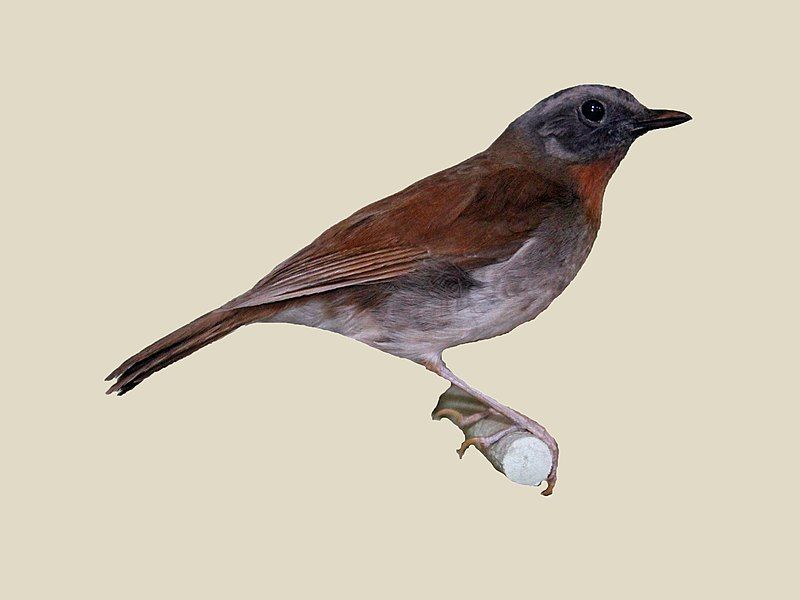
The red-throated Alethe is a species of small bird that belongs to the family Muscicapidae. This species is native to the Albertine Rift montane forests, which are mountain ranges located in the African Great Lakes region.
The natural habitat of the red-throated Alethe is subtropical or tropical moist montane forests. This type of habitat is characterized by its high levels of humidity and rainfall, as well as by the presence of vegetation such as trees, shrubs, and grasses.
These lush forests provide the red-throated Alethe with ideal conditions for survival, as they provide the bird with ample food sources and protection from predators.
| Kingdom | Animalia |
| Phylum | Chordata |
| Class | Aves |
| Order | Passeriformes |
| Family | Muscicapidae |
| Genus | Chamaetylas |
| Species | C. poliophrys |
20. Regal Sunbird
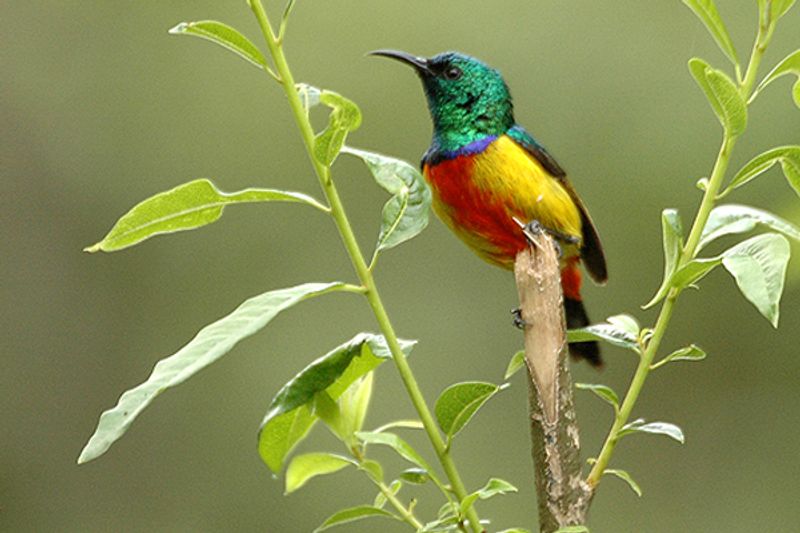
The regal sunbird is a beautiful species of bird found within the family of Nectariniidae. It is native to the Albertine Rift, which is a region of mountains and forests located in Central and East Africa.
This species of bird is known for its vibrant colors and shimmering plumage, which is often described as regal. The regal sunbird typically inhabits moist montane forests, such as those found in the Albertine Rift.
This species of bird is known to feed on nectar from flowers and it is an important pollinator for some plant species. It is also known to feed on insects, fruit, and other small invertebrates.
As a species of bird, the regal sunbird is typically quite small and has a short, thin bill. The regal sunbird is an important species, not only as a pollinator but also as a source of food for larger predators.
Despite its importance, the regal sunbird is threatened by deforestation and as a result, its population is declining in certain areas. Conservation efforts are needed to ensure the continued survival of this species.
| Kingdom | Animalia |
| Phylum | Chordata |
| Class | Aves |
| Order | Passeriformes |
| Family | Nectariniidae |
| Genus | Cinnyris |
| Species | C. regius |
21. Stripe-breasted tit
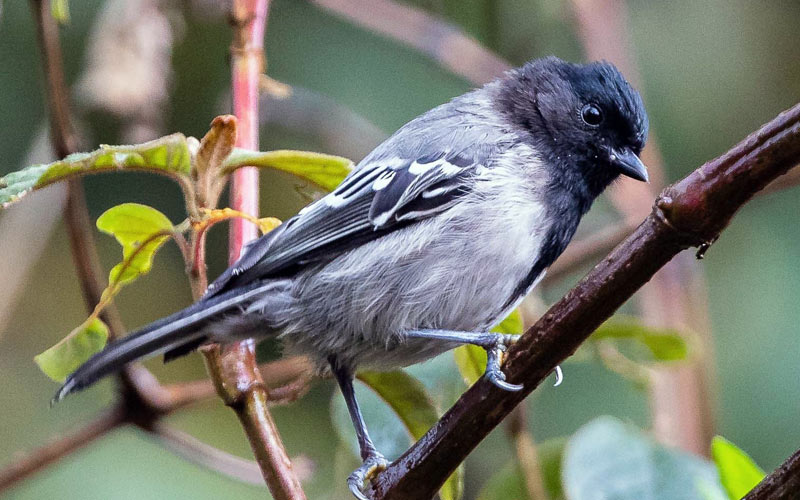
Source: ebird.org
The Stripe-breasted Tit is a species of bird that belongs to the Paridae family, also known as the true tit family. This species is found in four countries in Central Africa: Burundi, the Democratic Republic of the Congo, Rwanda, and Uganda.
The Stripe-breasted Tit is most comfortable living in moist montane forests, which are forests located in mountainous areas with a high level of moisture. The subtropical and tropical climate of the region provides an ideal environment for the Stripe-breasted Tit to thrive.
This species typically builds its nests in tree hollows, which it lines with feathers, grass, and fur. It feeds on a variety of small invertebrates, such as caterpillars, spiders, and beetles, as well as fruits and seeds.
The Stripe-breasted Tit is an important part of the montane forest ecosystem, helping to control the population of invertebrates and disperse seeds throughout the area.
| Kingdom | Animalia |
| Phylum | Chordata |
| Class | Aves |
| Order | Passeriformes |
| Family | Paridae |
| Genus | Melaniparus |
| Species | M. fasciiventer |
22. Mountain Masked Apalis
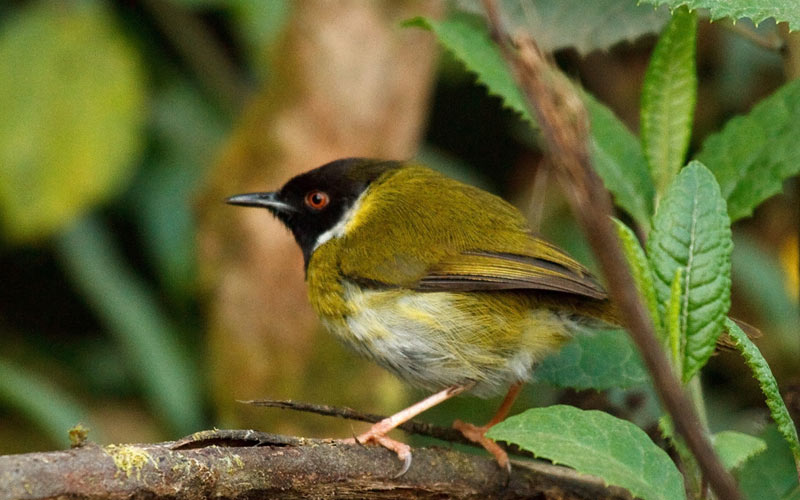
Source: johncaddick.co.uk
The mountain-masked apalis is a species of bird that belongs to the family Cisticolidae. This bird is native to the Albertine Rift montane forests, an area located along the African Great Rift Valley.
It is also known by its other name, the black-faced Apalis, due to its distinctive black face. The mountain-masked Apalis was first described in 1902 by a German ornithologist named Ernst Hartert, who was the first to recognize the species.
This species of bird is quite rare, and as such, has been categorized as near threatened by the International Union for Conservation of Nature.
It is known for its unique black-and-white facial pattern, which serves as camouflage among the dense vegetation of its native habitat. The mountain-masked Apalis has a length of around 11 cm and is typically found in pairs or small groups.
It feeds mainly on insects, although it will also eat some small fruits and seeds. The mountain-masked Apalis is an important part of the Albertine Rift montane forests, as it helps to maintain balance in the ecosystem and the population of its prey.
| Kingdom | Animalia |
| Phylum | Chordata |
| Class | Aves |
| Order | Passeriformes |
| Family | Cisticolidae |
| Genus | Apalis |
| Species | A. personata |
Conclusion
The Rift Valley is a unique and important habitat for many species of birds. It is home to a wide variety of species, including migratory birds, which rely on the area for food and shelter during their seasonal journeys.
The diverse and abundant habitats in the Rift Valley provide an ideal environment for many species of birds, making it a key area for bird conservation and research.